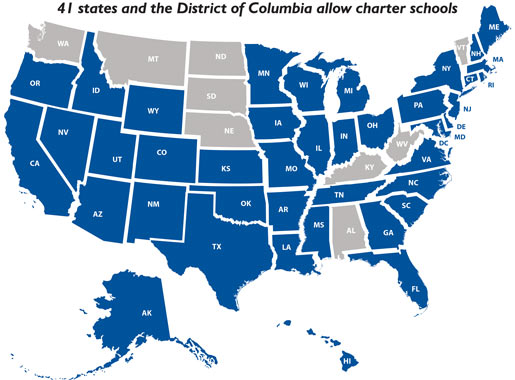The Still Unchartered Waters of Charter Schools
By Guest Blogger, Robin Vaughn
Charter schools are growing. During a 13 year period, from 1999 to 2012 the number of US charter schools increased nearly four-fold, from 1,500 to 5,700. More significantly, the student enrollment shot up from 0.3 million to 2.1 million, respectively. That’s a seven-fold increase in the collective student body.
Charter school administrations forge an independent path for meeting performance standards and as such, have a vested interest in reaching educational goals for student achievement, the success of which determines the longevity of the charter.
Exemplary management of a charter school or any educational institution depends heavily on a timely communications network. It’s essential to keep the conversation flowing between parents, teachers, PTA and school administration, solving problems or avoiding them altogether. In the convoluted processes of school administration, communication sometimes gets lost in the daily shuffle. A reformed education model that stresses accountability can’t afford such glitches and gaps.
On any given day, a charter school will reach out to assistant and homeroom teachers, grade leaders, teachers-in-residence, coaches, office personnel, PTA members and parents. That’s a lot of dialog that goes through the pipelines to keep a school running smoothly. Communication between and amongst these groups will be ongoing throughout the day, interwoven and interactive. They will archive meeting notes and homework grade averages, share school data, send student assessments, blast photos of daily classroom culture, announce PTA meetings, upcoming class trips and pizza nights. These communications will be sent through a variety of methods; via website, telephone, email, text and with paper-based notes and sign out forms. Communicating in this fragmented manner makes efficient administration of procedures and policies a real challenge.
What can be done to make communications easier and more efficient to ensure a charter school’s success? As a pioneering educational model, charter school administrations and PTA organizations should consider working together to find innovative approaches for comprehensive communication solutions. The delivery system of communications that each school chooses is critical to a successful outcome. The best one will be streamlined and store information seamlessly for easy, yet secure access.
If charter schools can establish a communications support infrastructure whereby emails and voice blasts and general school and calendar information can be obtained, revised and responded to from one designated place, they have a better chance of survival.
In the end, it’s all about communication. So‚ how’s your charter school doing?
Robin Vaughn is a writer and enrichment education specialist contributing to publications in the healthcare, wellness, communications, science and technology fields. She writes magazine articles and blogs, instructional materials and press releases. Find out more information by going to her business website, www.wordentity.com


